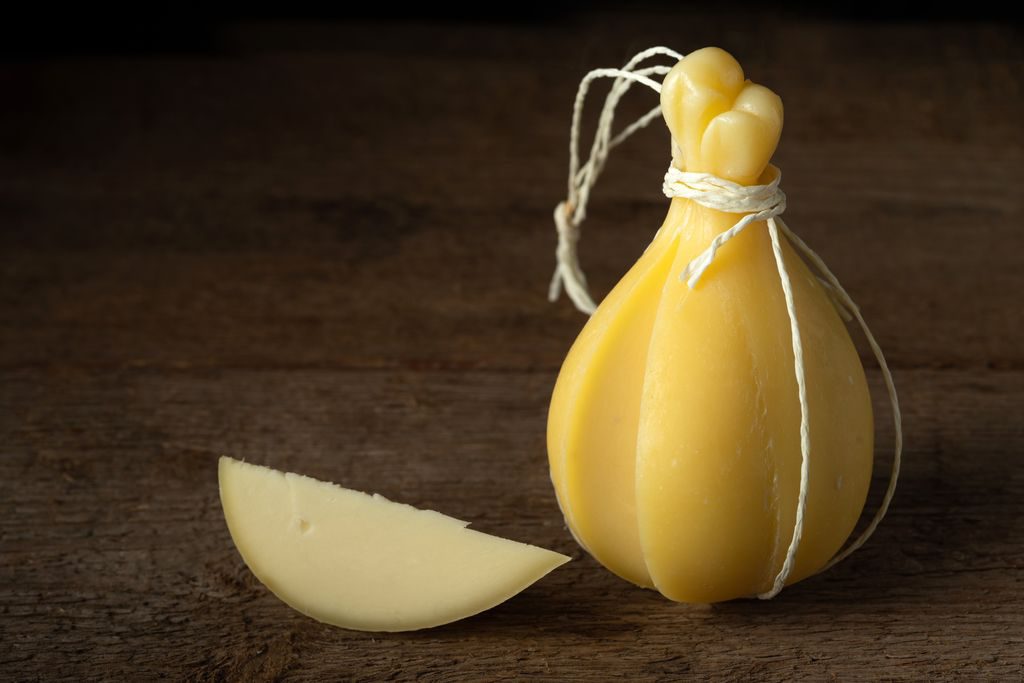Caciocavallo cheese
Caciocavallo is a typical cheese from southern Italy. Sweet or spicy, the strong flavour goes very well with lasagna, stuffed vegetables and savoury pies, but it can also be enjoyed along with bread or melted.

Caciocavallo is a spun cured cheese typical of Southern Italy, where it is available in the Ragusano, Podolico and Silano varieties. It is produced with cow’s milk, rennet, lactic ferments and salt. Depending on the length of the seasoning, it lends itself to be enjoyed sliced and served in classic cold cuts, or to be used in more or less elaborate recipes.
Variety of caciocavallo
In Italy we can boast different varieties of cheese, which in some areas is also known by the name of provola: there is caciocavallo podolico, so-called because it is produced with the milk of Podoliche cows, (bovine breed bred in some regions of the Center /Southern Italy); the caciocavallo Silano DOP; the Caciocavallo ragusano; Caciocavallo D’Agnone and others. All are united by being produced exclusively with cow’s milk.
Origin and seasoning of caciocavallo
Maybe not everyone knows it, but caciocavallo is widely produced in the regions that in the past formed the Kingdom of the Two Sicilies. There are several theses on the origins of its name. One of the most accredited wants it to be due to the way it is aged: it is kept hanging astride a beam. This phase of its production generally takes place inside environments such as cellars and lasts from a few weeks to a few months.
Calories and nutrition facts of caciocavallo
The cheese is characterized by a smooth and thin crust, its pasta is more or less hard and spicy depending on the seasoning. Caciocavallo contains on average 439 calories per 100 grams. The same weight contains 38% protein and 25% fat.
Recipes with caciocavallo
Among the recipes with caciocavallo, one of the simplest but tastiest is that of Sicilian caciocavallo or “cacio all’argentiera”: it is made by frying the cheese sliced in abundant oil until it lasts, then sprinkle it with oregano and vinegar. And in fact, it gives its best as a melt: baked caciocavallo (au gratin or not) can be served inside terracotta dishes and accompanied with salami and pickles. It can still be enjoyed with bread or as an accompaniment to vegetables, chicory, perhaps. Obviously, when grated, it can be used in many oven-cooked dishes such as lasagna, stuffed vegetables and savoury pies. Among the first courses, excellent is the caciocavallo and pancetta pasta.




